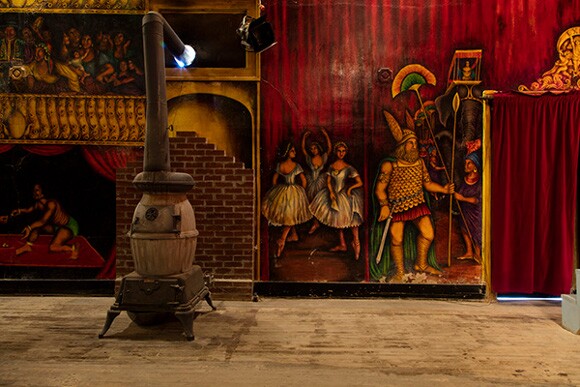

Busloads of folks came from Las Vegas, LA, and, in time, even farther afield. Her husband left, but Marta stayed: painting, playing the piano, sewing costumes, practicing, dancing, acting, singing, creating new shows, such as “Comeback Vaudeville,” “Turkish Fairytale” and “The Mirror, the Carpet and the Lemon.” She appeared every Friday, Saturday, and Monday night without fail. “No one can take away the hours of joy I had painting it,” Marta responded. Someone asked, “You spent six years painting the walls of this place that could be sold, or torn down, any minute?” “Amargosa,” a documentary by Todd Robinson, was released in 2000. She spent four years painting the walls and two more painting the ceiling, during which time her husband, who was tending bar at a nearby brothel, got tired of playing second fiddle to Marta’s art, found a girlfriend and eventually left. Then she got the idea to paint the walls of the opera house with an imaginary audience: nuns, courtiers, courtesans, popes, dukes. The audience would often be five or six people and if nobody came, as happened frequently, Marta danced anyway. In the middle of the desert, by herself, she danced anyway. So she and her husband packed up, moved, rented the dance hall and opened the opera house.ĭeath Valley Junction at one point had a population of two, and has topped out over the years at roughly 20. While their car was being fixed, she peeked through the window of a dilapidated dance hall, deserted since mining days, and saw her future: her unlived life, her destiny. 1924), a New York ballerina, singer, painter and pianist on a road trip to California with her husband, stopped in Death Valley Junction with a flat tire. At the age of 84 at that point, she performed only Saturday nights. I never actually saw Marta - the opera house’s founder, owner and, for more than four decades, its star solo performer.

Several springs ago, I took a road trip to Death Valley, stayed at the Amargosa Opera House and Hotel and fell in love with Marta Becket.


 0 kommentar(er)
0 kommentar(er)
